Cause of death Decapitation Name Robert 2nd Nationality English | Tenure 1576–1601 Title Earl of Essex Role Political figure | |
Resting place Chapel of St. Peter ad Vincula, London Spouse Frances Walsingham (m. 1590) Children Robert Devereux, 3rd Earl of Essex, Frances Seymour, Duchess of Somerset Parents Lettice Knollys, Walter Devereux, 1st Earl of Essex Siblings Penelope Blount, Countess of Devonshire, Dorothy Percy, Countess of Northumberland Similar People Robert Dudley - 1st Earl of Le, Lettice Knollys, William Cecil - 1st Baron Bu, Elizabeth I of England, Robert Devereux - 3rd Earl o | ||
Robert Devereux 2nd Earl of Essex
Robert Devereux, 2nd Earl of Essex, KG, PC (; 10 November 1565 – 25 February 1601) was an English nobleman and a favourite of Elizabeth I. Politically ambitious, and a committed general, he was placed under house arrest following a poor campaign in Ireland during the Nine Years' War in 1599. In 1601, he led an abortive coup d'état against the government and was executed for treason.
Contents
- Robert Devereux 2nd Earl of Essex
- Early life
- Court and military career
- Ireland
- First trial
- Essex rebellion
- Treason trial and death
- The Essex ring
- Poetry
- Portrayals of Essex
- Opera
- Stage
- Film
- TV
- Essex in literature
- References
Early life
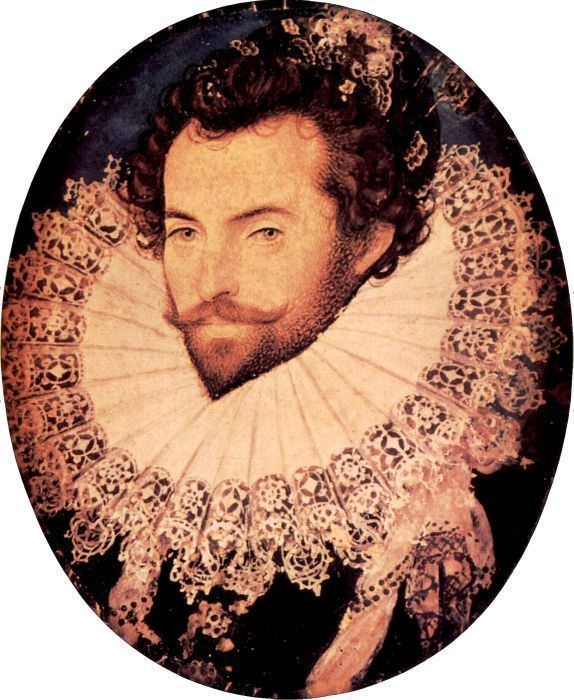
Essex was born on 10 November 1565 at Netherwood near Bromyard, in Herefordshire, the son of Walter Devereux, 1st Earl of Essex, and Lettice Knollys. His maternal great-grandmother Mary Boleyn was a sister of Anne Boleyn, the mother of Queen Elizabeth I, making him a first-cousin-twice-removed of the Queen.
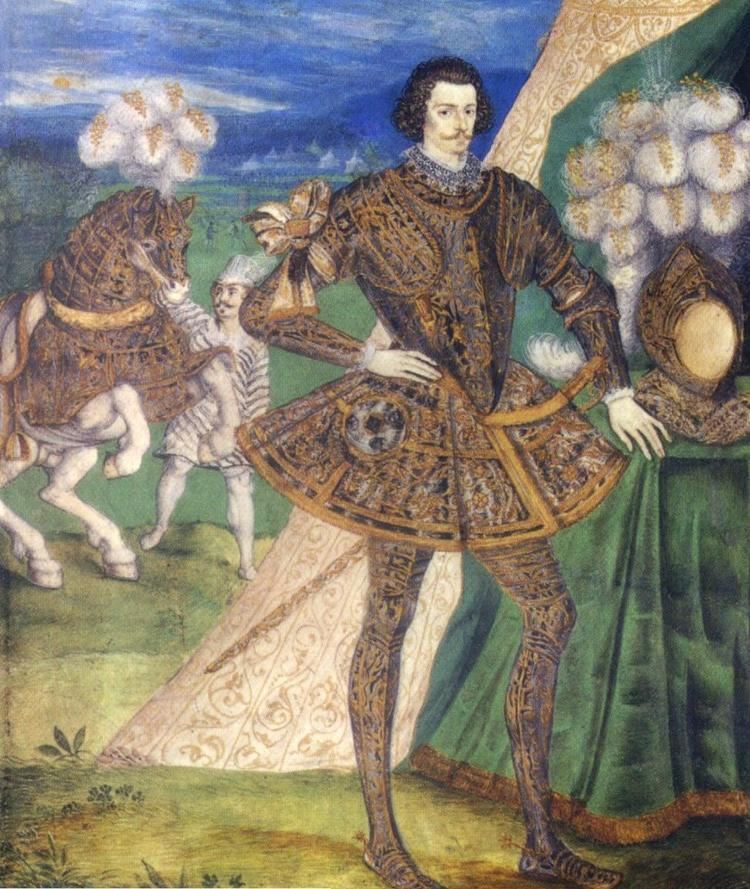
He was brought up on his father's estates at Chartley Castle, Staffordshire, and at Lamphey, Pembrokeshire, in Wales. His father died in 1576, and the new Earl of Essex became a ward of Lord Burghley. In 1577, he was admitted as a fellow-commoner at Trinity College, Cambridge; in 1579, he matriculated; and in 1581 he graduated as Master of Arts.

On 21 September 1578, Essex's mother married Robert Dudley, Earl of Leicester, Elizabeth I's long-standing favourite and Robert Devereux's godfather.

Essex performed military service under his stepfather in the Netherlands, before making an impact at court and winning the Queen's favour. In 1590, he married Frances Walsingham, daughter of Sir Francis Walsingham and widow of Sir Philip Sidney, by whom he was to have several children, three of whom survived into adulthood. Sidney, who was Leicester's nephew, had died in 1586 at the Battle of Zutphen in which Essex had also distinguished himself. In October 1591, Essex's mistress, Elizabeth Southwell, gave birth to a son who survived into adulthood.
Court and military career
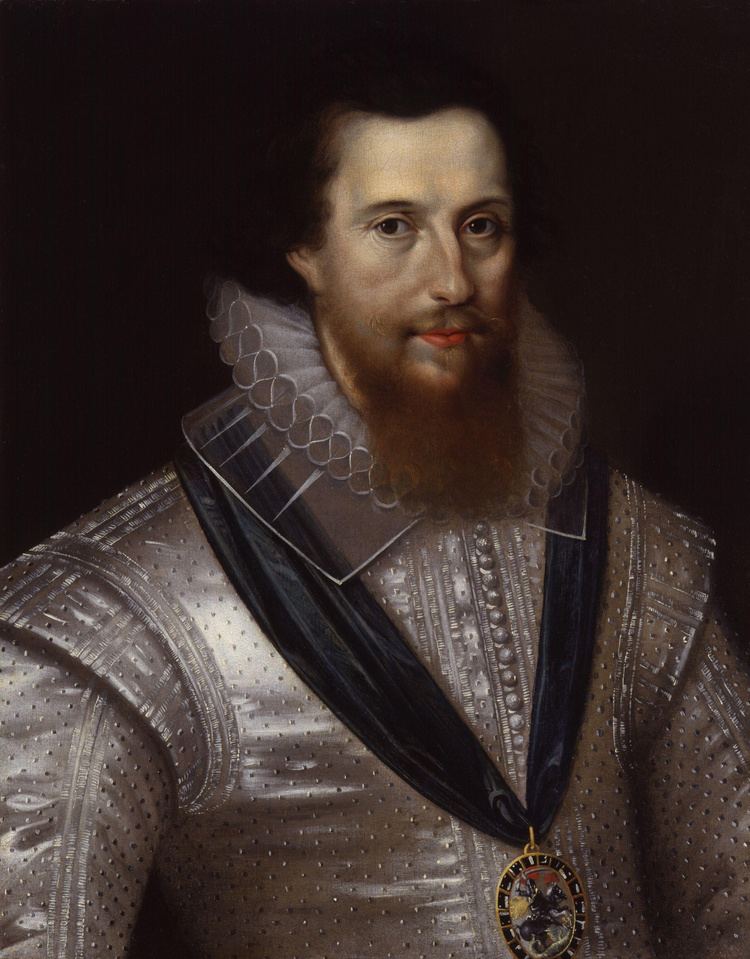
Essex first came to court in 1584, and by 1587 had become a favourite of the Queen, who relished his lively mind and eloquence, as well as his skills as a showman and in courtly love. In June 1587 he replaced the Earl of Leicester as Master of the Horse. After Leicester's death in 1588, the Queen transferred the late Earl's royal monopoly on sweet wines to Essex, providing him with revenue from taxes. In 1593, he was made a member of her Privy Council.
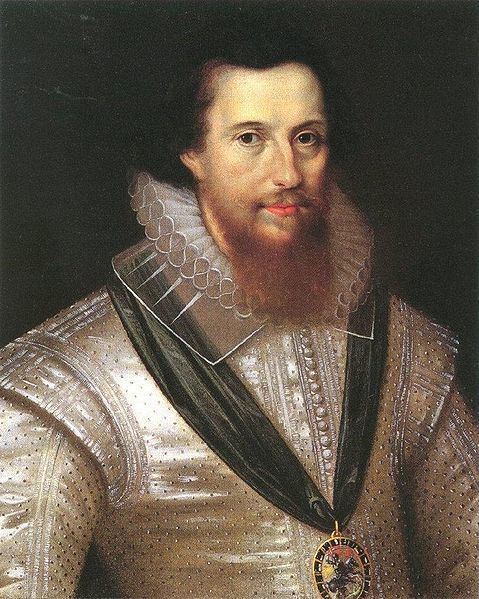
Essex underestimated the Queen, however, and his later behaviour towards her lacked due respect and showed disdain for the influence of her principal secretary, Robert Cecil. On one occasion during a heated Privy Council debate on the problems in Ireland, the Queen reportedly cuffed an insolent Essex round the ear, prompting him to half draw his sword on her.
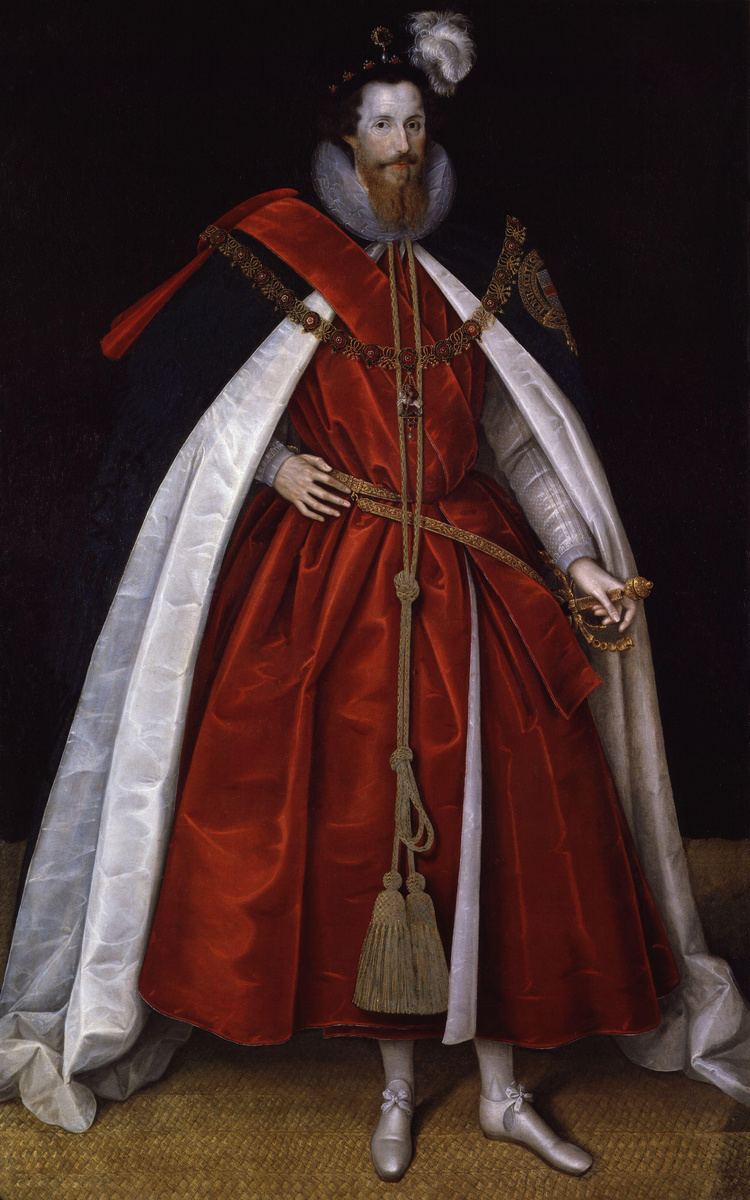
In 1589, he took part in Francis Drake's English Armada, which sailed to Spain in an unsuccessful attempt to press home the English advantage following the defeat of the Spanish Armada, although the Queen had ordered him not to take part. In 1591, he was given command of a force sent to the assistance of King Henry IV of France. In 1596, he distinguished himself by the capture of Cádiz. During the Islands Voyage expedition to the Azores in 1597, with Walter Raleigh as his second-in-command, he defied the Queen's orders, pursuing the Spanish treasure fleet without first defeating the Spanish battle fleet.
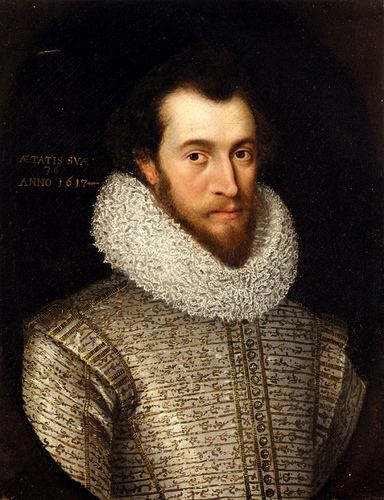
So when the 3rd Spanish Armada first appeared off the English coast in October 1597, the English fleet was far out to sea, with the coast almost undefended, and panic ensued. This further damaged the relationship between the Queen and Essex, even though he was initially given full command of the English fleet when he reached England a few days later. Fortunately a storm dispersed the Spanish fleet - a number of ships were captured by the English and though there were a few landings, the Spanish withdrew.
Ireland
Essex's greatest failure was as Lord Lieutenant of Ireland, a post which he talked himself into in 1599. The Nine Years' War (1595–1603) was in its middle stages, and no English commander had been successful. More military force was required to defeat the Irish chieftains, led by Hugh O'Neill, the Earl of Tyrone and supplied from Spain and Scotland.
Essex led the largest expeditionary force ever sent to Ireland—16,000 troops—with orders to put an end to the rebellion. He departed London to the cheers of the Queen's subjects, and it was expected the rebellion would be crushed instantly, but the limits of Crown resources and of the Irish campaigning season dictated otherwise. Essex had declared to the Privy Council that he would confront O'Neill in Ulster.
Instead, he led his army into southern Ireland, where he fought a series of inconclusive engagements, wasted his funds, and dispersed his army into garrisons, while the Irish won two important battles in other parts of the country. Rather than face O'Neill in battle, Essex entered a truce that some considered humiliating to the Crown and to the detriment of English authority. The Queen herself told Essex that if she had wished to abandon Ireland it would scarcely have been necessary to send him there.
In all of his campaigns Essex secured the loyalty of his officers by conferring knighthoods, an honour the Queen herself dispensed sparingly, and by the end of his time in Ireland more than half the knights in England owed their rank to him. The rebels were said to have joked that, "he never drew sword but to make knights." But his practice of conferring knighthoods could in time enable Essex to challenge the powerful factions at Cecil's command.
He was the second Chancellor of Trinity College, Dublin, serving from 1598 to 1601.
First trial
Relying on his general warrant to return to England, given under the great seal, Essex sailed from Ireland on 24 September 1599, and reached London four days later. The Queen had expressly forbidden his return and was surprised when he presented himself in her bedchamber one morning at Nonsuch Palace, before she was properly wigged or gowned. On that day, the Privy Council met three times, and it seemed his disobedience might go unpunished, although the Queen did confine him to his rooms with the comment that "an unruly beast must be stopped of his provender."
Essex appeared before the full Council on 29 September, when he was compelled to stand before the Council during a five-hour interrogation. The Council—his uncle William Knollys, 1st Earl of Banbury included—took a quarter of an hour to compile a report, which declared that his truce with O'Neill was indefensible and his flight from Ireland tantamount to a desertion of duty. He was committed to the custody of Sir Richard Berkeley in his own York House on 1 October, and he blamed Cecil and Raleigh for the queen's hostility. Raleigh advised Cecil to see to it that Essex did not recover power, and Essex appeared to heed advice to retire from public life, despite his popularity with the public.
During his confinement at York House, Essex probably communicated with King James VI of Scotland through Lord Mountjoy, although any plans he may have had at that time to help the Scots king capture the English throne came to nothing. In October, Mountjoy was appointed to replace him in Ireland, and matters seemed to look up for the Earl. In November, the queen was reported to have said that the truce with O'Neill was "so seasonably made... as great good... has grown by it." Others in the Council were willing to justify Essex's return to Ireland, on the grounds of the urgent necessity of a briefing by the commander-in-chief.
Cecil kept up the pressure and, on 5 June 1600, Essex was tried before a commission of 18 men. He had to hear the charges and evidence on his knees. Essex was convicted, was deprived of public office, and was returned to virtual confinement.
Essex rebellion
In August, his freedom was granted, but the source of his basic income—the sweet wines monopoly—was not renewed. His situation had become desperate, and he shifted "from sorrow and repentance to rage and rebellion." In early 1600, he began to fortify Essex House, his town mansion on the Strand, and gathered his followers. On the morning of 8 February, he marched out of Essex House with a party of nobles and gentlemen (some later involved in the 1605 Gunpowder Plot) and entered the city of London in an attempt to force an audience with the Queen. Cecil immediately had him proclaimed a traitor. A force under Sir John Leveson placed a barrier across the street at Ludgate Hill. When Essex's men tried to force their way through, Essex's stepfather, Sir Christopher Blount, was injured in the resulting skirmish, and Essex withdrew with his men to Essex House. Essex surrendered after Crown forces besieged Essex House.
Treason trial and death
On 19 February 1601, Essex was tried before his peers on charges of treason. Quoting from State Trials. Compiled by T. B. Howell and T. J. Howell. 33 Vols. London. 1809-26. Vol. I, pp. 1334-1360, author Laura Hanes Cadwallader summarized the indictment:
The indictment charged Essex with "conspiring and imagining at London, . . . to depose and slay the Queen, and to subvert the Government." It also stated that Essex had "endeavored to raise himself to the Crown of England, and usurp the royal dignity," and that in order to fulfill these intentions, he and others "rose and assembled themselves in open rebellion, and moved and persuaded many of the citizens of London to join them in their treason, and endeavored to get the city of London into their possession and power, and wounded and killed many of the Queen's subjects then and there assembled for the purpose of quelling such rebellion." Essex was charged also with holding the Lord Keeper and the other Privy Councillors in custody "for four hours and more."
Part of the evidence showed that he was in favour of toleration of religious dissent. In his own evidence, he countered the charge of dealing with Catholics, swearing that "papists have been hired and suborned to witness against me." Essex also asserted that Cecil had stated that none in the world but the Infanta of Spain had right to the Crown of England, whereupon Cecil (who had been following the trial at a doorway concealed behind some tapestry) stepped out to make a dramatic denial, going down on his knees to give thanks to God for the opportunity. The witness whom Essex expected to confirm this allegation, his uncle William Knollys, was called and admitted there had once been read in Cecil's presence a book treating such matters (possibly either The book of succession supposedly by an otherwise unknown R. Doleman but probably really by Robert Persons or A Conference about the Next Succession to the Crown of England explicitly mentioned to be by Persons, in which a Catholic successor friendly to Spain was favoured). However he denied he had heard Cecil make the statement. Thanking God again, Cecil expressed his gratitude that Essex was exposed as a traitor while he himself was found an honest man.
Essex was found guilty and, on 25 February 1601, was beheaded on Tower Green, becoming the last person to be beheaded in the Tower of London. It was reported to have taken three strokes by the executioner Thomas Derrick to complete the beheading. Previously Thomas Derrick had been convicted of rape but was pardoned by the Earl of Essex himself (clearing him of the death penalty) on the condition that he became an executioner at Tyburn. At Sir Walter Raleigh's own execution on 29 October 1618, it was alleged that Raleigh had said to a co-conspirator, "Do not, as my Lord Essex did, take heed of a preacher. By his persuasion he confessed, and made himself guilty." In that same trial, Raleigh also denied that he had stood at a window during the execution of Essex's sentence, disdainfully puffing out tobacco smoke in sight of the condemned man. Essex at the end shocked many by denouncing his sister Penelope, Lady Rich as his co-conspirator: the Queen, who was determined to show as much clemency as possible, ignored the charge.
Some days before the execution, Captain Thomas Lee was apprehended as he kept watch on the door to the Queen's chambers. His plan had been to confine her until she signed a warrant for the release of Essex. Capt. Lee, who had served in Ireland with the Earl, and who acted as go-between with the Ulster rebels, was tried and put to death the next day.
Essex's conviction for treason meant that the earldom was forfeit, and his son did not inherit the title. However, after the Queen's death, King James I reinstated the earldom in favour of the disinherited son, Robert Devereux, 3rd Earl of Essex.
The Essex ring
There is a widely repeated romantic legend about a ring given by Elizabeth to Essex. There is a possible reference to the legend by John Webster in his 1623 play The Devil's Law Case suggesting that it was known at this time, but the first printed version of it is in the 1695 romantic novel The Secret History of the most renowned Queen Elizabeth and the Earl of Essex, by a Person of Quality. The version given by David Hume in his History of England says that Elizabeth had given Essex a ring after the expedition to Cadiz that he should send to her if he was in trouble. After his trial he tried to send the ring to Elizabeth via the Countess of Nottingham, but the countess kept the ring as her husband was an enemy of Essex, as a result of which Essex was executed. On her deathbed the countess is said to have confessed this to Elizabeth, who angrily replied "May God forgive you, Madam, but I never can." The chapter house museum in Westminster Abbey has a gold ring which is claimed to be this one.
Some historians consider this story of the ring to be a myth, partly because there are no contemporary accounts of it. John Lingard in his history of England says the story appears to be a fiction, Lytton Strachey states "Such a narrative is appropriate enough to the place where it was first fully elaborated — a sentimental novelette; but it does not belong to history", and Alison Weir calls it a fabrication.
Poetry
Like many other Elizabethan aristocrats Essex was a competent lyric poet, who also participated in court entertainments. He engaged in literary as well as political feuds with his principal enemies, including Walter Raleigh. His poem "Muses no more but mazes" attacks Raleigh's influence over the queen.
Other lyrics were written for masques, including the sonnet "Seated between the old world and the new" in praise of the queen as the moral power linking Europe and America, who supports "the world oppressed" like the mythical Atlas. During his disgrace he also wrote several bitter and pessimistic verses. His longest poem, "The Passion of a Discontented Mind" (beginning "From silent night..."), is a penitential lament, probably written while imprisoned awaiting execution.
Several of Essex's poems were set to music. English composer John Dowland set a poem called "Can she excuse my wrongs with virtue's cloak?" in his 1597 publication First Booke of Songs: these lyrics have been attributed to Essex, largely on the basis of the dedication of "The Earl of Essex's Galliard", an instrumental version of the same song. Dowland also sets the opening verses of Essex's poem "The Passion of a Discontented Mind" ("From silent night") in his 1612 collection of songs. Orlando Gibbons set lines from the poem in the same year. Settings of Essex's poems "Change thy minde" (set by Richard Martin) and "To plead my faith" (set by Daniel Bacheler) are published in A Musicall Banquet (1610), a collection of songs edited by Robert Dowland.
Portrayals of Essex
There have been many portrayals of Essex throughout the years, here they are:
Opera
Stage
Film
TV
Essex in literature
At least two fencing treatises are dedicated to Robert, Earl of Essex. They are as follows:
Robert Devereux's death and confession became the subject of two popular 17th-century Broadside Ballads, set to the English folk tunes Essex Last Goodnight and Welladay. Numerous ballads lamenting his death and praising his military feats were also published throughout the 17th century.
